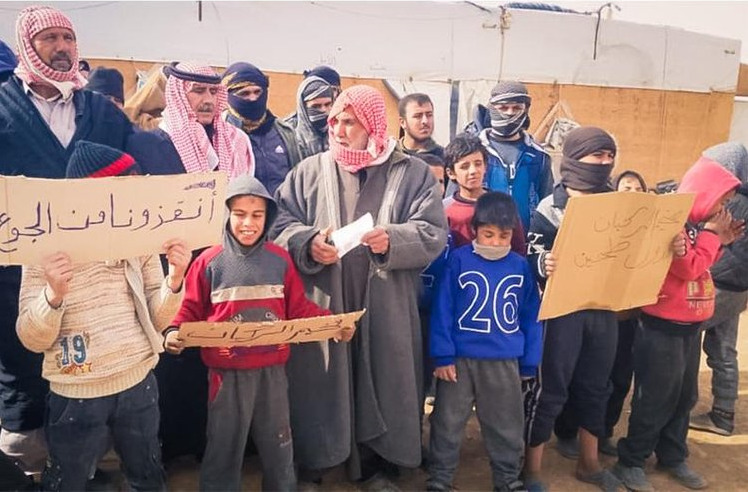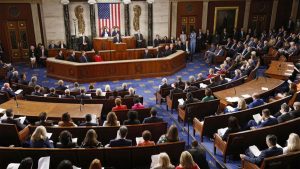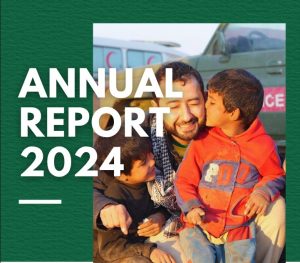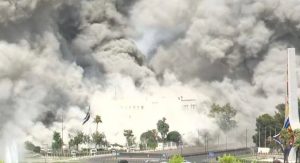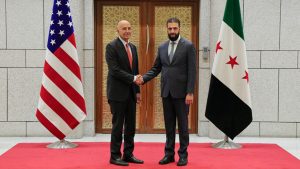Protecting the Internally Displaced Civilians of Rukban’s IDP Camp
The Rukban camp for internally displaced persons (IDPs) sits within a 55 km deconfliction zone surrounding the U.S. al-Tanf garrison at the intersection of the Jordanian and Iraqi borders with southeastern Syria. Due to an ongoing siege by the Assad regime and its Russian backers, the humanitarian situation in Rukban is dire. However, the United States can still alleviate the suffering of Rukban’s residents. Doing so would not only save lives but would also support multiple U.S. national security objectives.
Rukban’s population consists of civilians who fled from violence by the Assad regime and the Islamic State of Iraq and Syria (ISIS). They support the U.S.-led coalition’s presence at al-Tanf and are also a source of recruitment for Maghaweir al-Thawra (MAT), a U.S. partner force in the fight against ISIS. Al-Tanf garrison and MAT’s presence in the area are pivotal for the enduring defeat of ISIS, as the garrison’s strategic location helps disrupt supply routes ISIS uses to transfer weapons, fighters, and goods from eastern to western Syria.
In addition to the al-Tanf garrison’s role in combating ISIS, the base also undermines Iran’s efforts to send fighters and weapons from Iraq to Syria and Lebanon. Iran considers Syria as key to its national security and its nefarious activities across the region. Syria is important to Iran because it allows the IRGC and Iranian-backed militias such as Lebanese Hezbollah to have a presence on multiple borders with Israel. Although Iran can send fighters and weapons through air routes, it is not a substitute for the ability to transport fighters and weapons on a much larger scale through land routes. If the Tanf garrison was not under the control of the International Coalition, Iran would have a highway under the complete control of the IRGC that supports the logistics of their terrorist activities in Syria, Lebanon, and the wider region.
Currently, the only way goods are brought into the camp is through smuggling routes coming from Damascus to Rukban. They supply a small black market that sells goods at exuberant prices far too steep for most camp residents, the vast majority of whom are unemployed. For food and other basic necessities, Rukban relies on rare UN aid convoys, which require approval from the Assad regime and Russia to access the camp. However, the Assad regime and Russia are the ones behind the strangling siege and therefore should not be the ones with the authority to approve humanitarian aid convoys. The Assad regime and Russia seek the withdrawal of U.S. forces from al-Tanf at all costs, and strategically allow the continued deterioration of the humanitarian situation in the camp to undermine U.S. presence in the area.
For years now, the desperate conditions in Rukban have forced many residents to return to regime-controlled areas, where they face forced conscription, detention, or extrajudicial killing.
The failure of the UN aid process demands a change in U.S. policy regarding aid to Rukban. The United States must either supply aid directly from the al-Tanf garrison or find some means of sustaining the civilians in Rukban. The aid would target only Rukban’s most vulnerable residents
who are unable to obtain necessities from the local market. If the United States is not able to provide direct sustained aid, it should facilitate the relocation of civilians to non-regime-controlled areas of Syria.
Helping the civilian population in Rukban would be a low-cost, high-value measure. In addition to saving lives, it would also strengthen America’s relationship with partner forces within the 55 km deconfliction zone, help the United States counter threats from ISIS and Iran, and undermine Russian, Iranian, and Assad regime efforts to force a U.S. withdrawal.
Policy Recommendations:
Until the international community can reach a negotiated settlement to the Syrian conflict, violent extremist organizations are permanently defeated, and the security of Rukban’s civilians is guaranteed, the United States must continue its presence at al-Tanf garrison. Rukban’s location within the deconfliction zone surrounding al-Tanf, along with the relentless efforts of the U.S.-supported MAT, is the only thing protecting the camp from the Assad regime, its Russian and Iranian allies, and ISIS. A U.S. withdrawal from the garrison would guarantee the forced conscription, detention, or extrajudicial killing of most of the camp’s civilians. In addition to the human cost, the United States would be putting its own security interests at risk. Leaving the area would fuel the ISIS insurgency and enhance Iran’s ability to destabilize the region.
The United States must clearly and publicly recognize its failure to provide sustained aid through the UN Damascus Office. Acknowledging the failure of the UN process paves the way for the Department of Defense and the International Coalition to deliver direct aid to Rukban’s most disadvantaged residents via the al-Tanf garrison.
If the United States is unable to alleviate the humanitarian crisis in Rukban, it must ensure the safe evacuation of the camp’s residents to areas outside regime control.

